Why You MUST Discard Some of Your Sourdough Starter
This post may contain affiliate links.
You must discard some of your sourdough starter each time you feed it.
You'll discover that discarding is necessary to build a healthy and thriving sourdough starter - but it's not actually as wasteful as you might think.
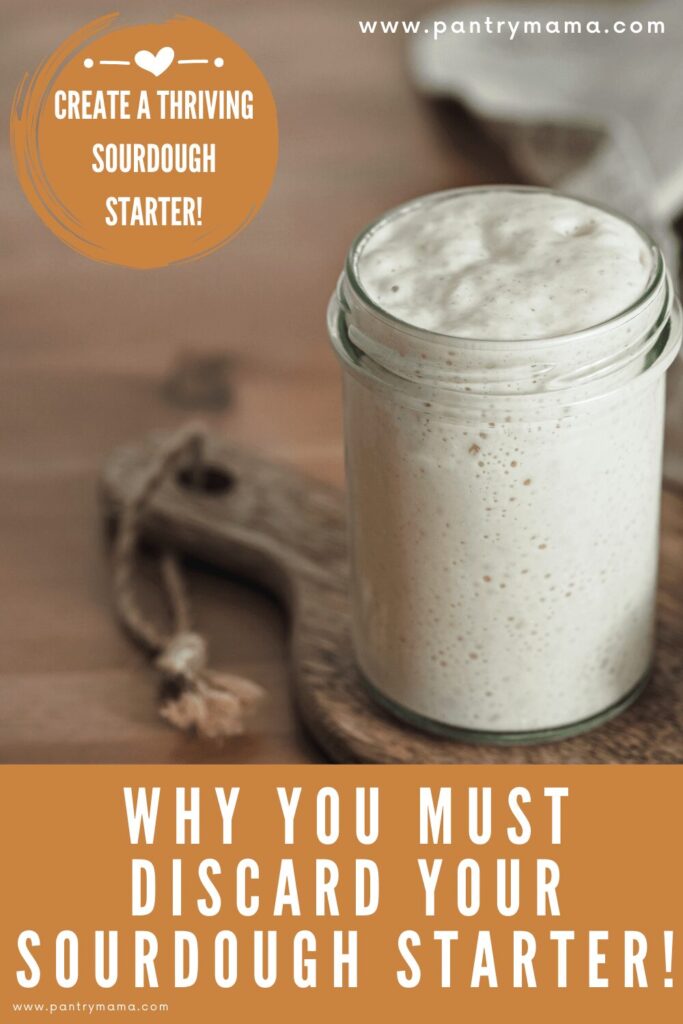
Why You Must Discard Some of Your Sourdough Starter Before You Feed It
If you don’t discard your sourdough starter, it will grow too big and be unmanageable. Not to mention you will go through an unmentionable amount of flour.
Let’s say you start with 50g of flour & water on day 1.
If you don’t discard, by day 5 you’ll end up needing to feed your starter in excess of 300g of flour per feed (ie twice a day).
By day 10 this would increase to in excess of 800g of flour per feed. Crazy right. And it will just keep growing!
What Is Actually Happening When You Discard Your Sourdough Starter
When you create a sourdough starter, you are in fact creating a microbial population.
These wild yeasts and lactic acid bacterias living in your sourdough world feed on the sugars in your flours. Through this feeding they create the bubbles that you see in your jar.
Their food is not endless and so eventually they will eat through all of the food your provided.
Some of the yeasts and bacteria will start to die. If your starter goes too long without food, it will start to make hooch and smell like acetone.
In order to allow your starter to grow and flourish, you need to "refresh" it with fresh flour and water.
Discarding some first allows you to add this fresh food, whilst maintaining your starter at a manageable size.
Not discarding your starter will also affect the flavor of your starter.
Not discarding before you feed will cause too much acidity which may eventually be detrimental to your microbes.
Why Discarding Is Not As Wasteful As You Might Think
It’s actually much less wasteful to discard a little each day while you’re developing your starter, than to waste a tonne of flour feeding a gigantic starter.
If you’re using all purpose flour, it’s like $1-2 for a kilo. I've built a starter using cheap, 99c all purpose flour and it's a fantastic starter, strong, flavorful and my absolute workhorse.
Rye is also a good option for your starter, but to keep costs down you could use a blend of all purpose and rye - or just use rye when your starter needs a boost.
When Can You Use Sourdough Discard?
You can use the discard from your starter to bake, but it’s better if you wait at least 7 days before you actually use it.
In the first 5-7 days, it’s better if you bin or compost your discard because the bacteria will be fighting it out and it will generally smell pretty gross.
You probably won't want to use it during that stage.
When you are ready to use your sourdough discard, I highly recommend this sourdough discard sandwich bread. Alternatively, you can store your sourdough discard in the fridge or add your sourdough discard to any recipe you like. These sourdough snack ideas are a fun way to use up discard too!

Once Your Starter Is Mature Things Change
Once your sourdough starter is mature, you do have options and you won't need to discard in the traditional sense.
Just a note before I explain the above concept - your starter will take quite a while to reach maturity.
While it may start consistently doubling after each feed relatively early (generally from around 14 days old) it still has lots of growing to do.
It will take a lot more time (and feeding) to develop its flavour and peak strength. I recommend not storing your starter in the fridge until it's reached maturity.
So once your starter has reached maturity, each time you use your starter in making sourdough bread, it is considered "discarding" in that you use it and can then just feed what's left in the jar for your next batch.
It's easier to explain using an example.
Say you have 120g of starter in your jar. You use 100g in your sourdough bread and return 20g of starter to the fridge until you want to feed it again to make more bread.
It's already been fed so you could just put it back into the fridge and then feed it again when you are ready to make your next lot of sourdough bread.
If you are keeping your sourdough starter on the counter, you could leave it for a few hours and then you'd need to feed it again ready to make your next batch.
Whether you use your starter in your bread making or you discard your starter in other ways - you MUST discard to keep your starter healthy and thriving.
You might also enjoy this comparison of sourdough discard vs sourdough starter (are they really that different?).
Further Reading
If you enjoyed reading about sourdough discard, you will love these sourdough discard recipes:
- These sourdough discard crackers take less than an hour and will have wanting more, more, more!
- These quick and easy sourdough discard hamburger buns will have you enjoying grilling season even more.
- Why not try these overnight sourdough discard recipes.
- Are Sourdough Discard Recipes Really Healthy? Find out here!

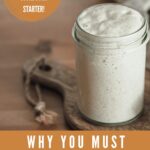
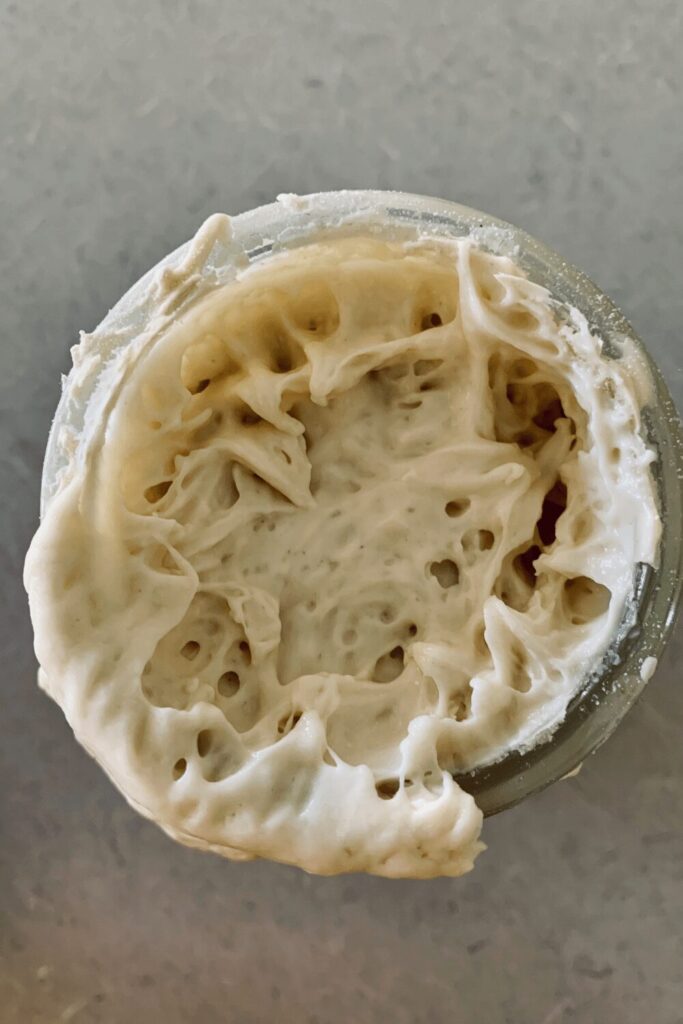


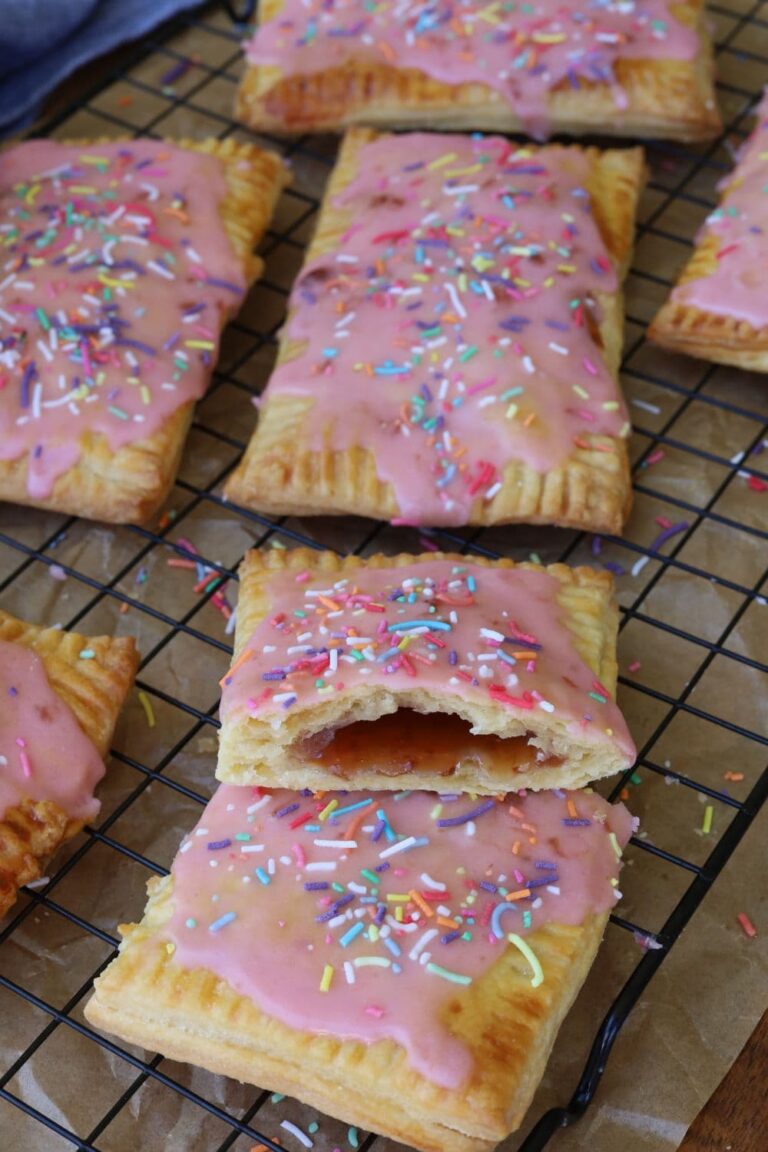
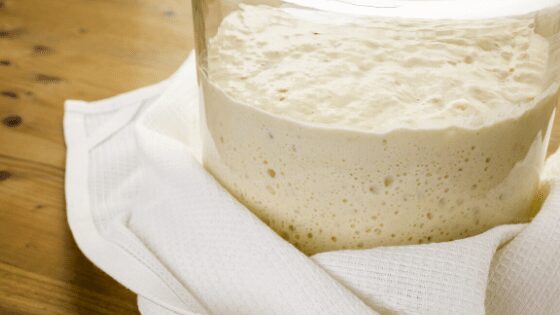

Is there a part of the starter that is better to keep? E.g. the top half?
In other words, should you scoop off the top of the starter, and keep that to feed? Or should you just stir your starter and then discard some before feeding?
Thanks for the tips! I've been using my sourdough starter discard to make waffles, and they are pretty darn good, especially if I make it the night before and let the yeast work overnight.
I have had my starter almost a year and I’ve been baking a lot lately, this morning I took 50g out for my dough and didn’t feed it right then because I thought I was going to to use more later in the day but didn’t have time, it’s about my bed time and I plan on baking with it again tomorrow, can I just feed it what I took out this morning or do I need to discard some more of it before feeding it tonight?
Thank You
We recently traveled to Florida, and I took my sourdough starter and continued baking bread. However, coming back home , my husband packed the sourdough starter without a protective towel around the jar, and surrounded the glass jar with ice. It does not look good and did not respond to feeding. I'm not sure what to do. I did discard half the starter and tried to feed again. It responded somewhat, but I do not see any of the bubbles. Help please!
I feeling nt getting anywhere. It seems I am discarding more than it is growing and soon I will have no starter in the jar and it will all be in the discard jar.
Tell me how much to discard then how much flour how much water to feed. I'm discarding and feeding 2x/day
Can't you just start with around 5 grams of starter, feed it as much flour and water as you want as long as it's a one to one ratio, and then wait until it's doubled? That's what I've done as of late. I use about 5 to 10 grams starter, feed it 50 grams water and 50 flour and use it or feed it once at 25 g each and then feed again. I never have discard doing this method. Is it changing anything for my starter?
Thank you for sharing
Thank you, Thank you! The BEST & most THOROUGH explanation I've found. I understand now.
How do I make a starter?
I have a query on discarding starter . Before baking, I feed my starter from the fridge 3 or 4 times the day before. The small amount remaining is then refrigerated for the next week. This way I only have 1 starter, no discard and it is fed weekly. Is there anything wrong in doing it this way?
So when the starter is ready to use, do we discard some as usual before feeding it before baking, or just feed with no discard? No quite clear. Thanks!
GREAT tips!!!
My daughter loves sourdough and so I have been working to get better at making it. I love getting as much information as I can when diving into new thing. This was a great article with such good information.
If I just took out my sourdough starter from the fridge to feed and bake, should I discard, or feed a2-3 times before I discard ? I'm so confused ! Thank you !
In your example, "Say you have 120g of starter in your jar. You use 100g in your sourdough bread and return 20g of starter to the fridge until you want to feed it again to make more bread.", would the subsequent feeding for the next bake be 50 grams flour 50 grams water to return to 120 grams total? Or 20 grams flour 20 grams water to maintain a 1:1:1 ratio?
I have never made sourdough in my life and afraid to even make an attempt! My question is once I start mix my starter using 2 Tablespoons of AP unbleached, flour, Kiki, flour and 2 Tablespoons of bottle water do I immediately put it into the refrigerator or countertop and for how many days after feeding each day. How do I know if it’s ready.
I can't find out if 1/2 cup or 1 cup equals 50 or 100 grams?
Thank you
i accidentally fed my starter THEN discarded half. is my starter gonna be ok?
New hear and I am confused. So someone gave me mature starter. So when I going to bake the part that I am adding to recipe is considered the discard? Is this correct? So when done and I wont be baking for another 5 days or so do I feed again and place in the fridge? or just put it in the fridge unfed? If unfed, do I need to discard (and not use in the bread recipe) then fed it and then put my bread together? Told I was new and confused...lol
Help! I am on day four of feeding my starter, I forgot to discard before feeding it. What do I do now?
Thank you!
You are the first person I have seen say that ‘using’ = discarding (most recipes add quantities of flour/water and then have to chuck half the starter each time 😟)
I have made sourdough (and old dough) breads for decades. The starter sleeps in the fridge in a small jam jar, I give it a spoon or two of flour (plus water if too thick) and put it by the Aga to wake it up. Once it’s bubbly about 3/4 if the jar goes in a basin with a cup of flour and left to make a ‘sponge starter’ and the remaining starter in the jar gets another couple of spoons of flour and water, left a wee while to get feeding, then goes back to the fridge for a nap - not a bad life 😊
Periodically I swap it into a clean jar (rinsing every scrap of the residue into my dough!)
Making a sponge puts a much greater ‘living’ volume through the dough, so that tends to take off a bit faster too. I find these stages, because sourdough is so forgiving of lax timekeeping, fit easily around work/going out/sleeping etc. - though it is extraordinarily difficult to persuade others that just because it happens over a longer period of time doesn’t mean it’s time consuming!
I also recently read (and can confirm) that it doesn’t need the traditional long knead - if you just give the dough a couple of folds every time you pass the basin it basically kneads itself by re-rising. A useful tip from a professional baker who had been on the point of giving up because of arthritic hands!
I don’t understand the requirement for discard. I have a wonderful sourdough starter and have been making sourdough breads for years. I never discard. I simply take out enough starter for my recipe, then add fresh water and flour to my starter jar, stir and refrigerate until next time.
I don’t want to discard. As I want to build more sourdough, so can I just add flour and water the next day to increase my amount?
Thank you for this simple explanation! I just started making sourdough bread/bagels.... Love that even though I am gluten sensitive and gave been on a gf diet for over 10 yrs, I can eat this and not only tolerate it, my gut health has dramatically improved! I did purchase imported flour from Italy (right on Amazon! Not cheap but definitely worth it as Europeans do not use pesticides on their crops!) I'm absolutely amazed and so happy to be able to eat homemade bread again 🥰
Sourdough can be so confusing.
Hopefully you find the Pantry Mama resources helpful to make it less confusing. 🙂 We also have an active Facebook group with close to 300k members - it's a great group to get questions answered quickly and troubleshoot any issues. You can join the group here if you would like.
Hello, I can see all of this talk about discards, and find it odd!
I generally run two starters in parallel and use them alternately in baking. When I want to bake I take the next starter to be used out of the fridge, feed it, about enough to make a loaf, wait overnight then use it, whatever is left goes back in the fridge! So i only feed my starter what I need, and then use. Volume/weight stays the same. No waste, live starter.
I keep two just in case one gets a problem.
I have a problem with my starter that is 40 weeks old, it got mouldy in the fridge! so I Am going to follow you back to happiness I had a stroke and have become forgetful, my sourdough oatmeal cookies were beautiful so wish me luck here in Suffolk England. TVM